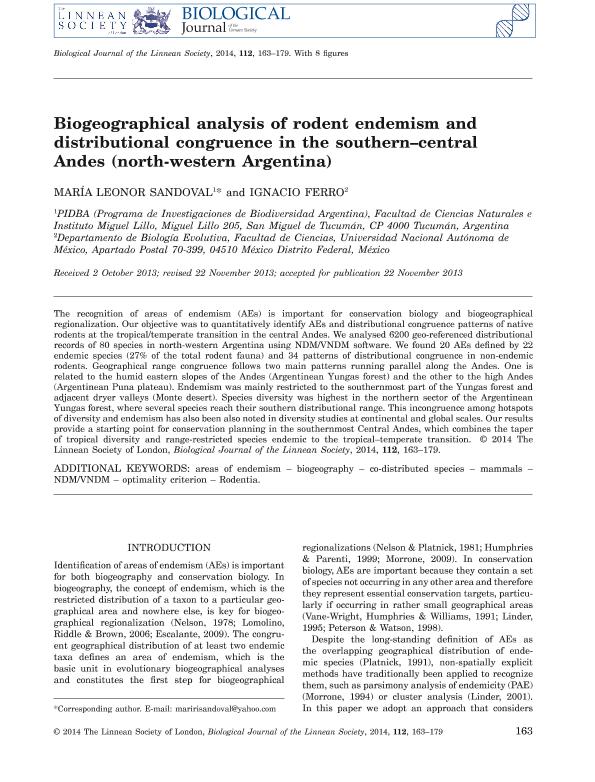Artículo
Biogeographical analysis of rodent endemism and distributional congruence in the southern-central Andes (north-western Argentina)
Fecha de publicación:
05/2014
Editorial:
Wiley
Revista:
Biological Journal Of The Linnean Society
ISSN:
0024-4066
Idioma:
Inglés
Tipo de recurso:
Artículo publicado
Clasificación temática:
Resumen
The recognition of areas of endemism (AEs) is important for conservation biology and biogeographical regionalization. Our objective was to quantitatively identify AEs and distributional congruence patterns of native rodents at the tropical/temperate transition in the central Andes. We analysed 6200 geo-referenced distributional records of 80 species in north-western Argentina using NDM/VNDM software. We found 20 AEs defined by 22 endemic species (27% of the total rodent fauna) and 34 patterns of distributional congruence in non-endemic rodents. Geographical range congruence follows two main patterns running parallel along the Andes. One is related to the humid eastern slopes of the Andes (Argentinean Yungas forest) and the other to the high Andes (Argentinean Puna plateau). Endemism was mainly restricted to the southernmost part of the Yungas forest and adjacent dryer valleys (Monte desert). Species diversity was highest in the northern sector of the Argentinean Yungas forest, where several species reach their southern distributional range. This incongruence among hotspots of diversity and endemism has also been also noted in diversity studies at continental and global scales. Our results provide a starting point for conservation planning in the southernmost Central Andes, which combines the taper of tropical diversity and range-restricted species endemic to the tropical–temperate transition.
Archivos asociados
Licencia
Identificadores
Colecciones
Articulos(ILAV)
Articulos de INST.DE INVESTIGACION EN LUZ, AMBIENTE Y VISION
Articulos de INST.DE INVESTIGACION EN LUZ, AMBIENTE Y VISION
Citación
Sandoval Salinas, Maria Leonor; Ferro, Luis Ignacio; Biogeographical analysis of rodent endemism and distributional congruence in the southern-central Andes (north-western Argentina); Wiley; Biological Journal Of The Linnean Society; 112; 1; 5-2014; 163-179
Compartir
Altmétricas




